Roma tomatoes are a meatier, less seedy variety of tomato. They are commonly used to make tomato paste, tomato sauce, or for dehydrating. I also use them in my salsa recipe for canning.
New to gardening? Limited on space? The 5-Gallon Garden gives you the skills you need to grow food in the space you have. Get started with your garden today!
Get cooking with Roma tomatoes!
JUMP TO:
- Intro to Roma tomatoes
- Requirements for growing Roma tomatoes
- Growing in containers
- Growing in the ground
- How to harvest Roma tomatoes
- Using Roma tomatoes in the kitchen
As you gear up for gardening season, it’s time to consider which fruits and vegetables you’d like to incorporate into your garden. Whether it’s your first time attempting a backyard garden or you consider yourself gifted with a green thumb, tomatoes are an easy, delicious choice to include in the lineup.
Specifically, be sure to grow Roma tomatoes! If you’re ready to dive in and learn more about how to successfully grow these tasty cooking tomatoes, here’s a brief guide to help you get started.
Introduction to Roma Tomatoes
Calling all paste tomatoes by the Roma name is kind of like calling all facial tissue Kleenex. The Roma tomato variety has become the face of paste tomatoes and we often call all paste tomatoes by that name. Technically, these tomatoes are a specific variety of paste tomato. The San Marzano tomato is another paste tomato that gets high marks for flavor.
Grow Some Greens!
Ready to grow fresh greens, no matter WHERE you live? Sign up for my
FREE quick-start guide and start growing some of your own food!
They are both heirloom tomatoes, which means you can save the seeds from year to year. (Here’s how to save tomato seeds.) Paste tomatoes — whether Romas, the San Marzano tomato, or any of the other paste tomato varieties — share some traits.
- This type of tomato is meatier than slicing tomatoes, making them a favorite for cooking down into thick, rich pasta sauces.
- These small, elongated tomatoes are firm to the touch and contain fewer seeds and less moisture than many other variants.
- These meaty tomatoes typically grow about three feet tall and can be cultivated outdoors in a garden bed or planted in a container. They’re a great option for gardeners who are short on space.
- They are determinate, so they’ll all ripen within a narrow window of time – not throughout the season.
Growing Roma Tomatoes
A Roma tomato plant doesn’t need a lot to thrive. In fact, I’ve found them to be some of the easiest, hardiest tomatoes to grow. They tend to be a sturdy plant, producing flavorful nuggets of tomato goodness in the heat of the summer.
As sturdy as they are, it’s still a good idea to surround them with a tomato cage to provide support.
Roma tomatoes grow best in warm temperatures that range between 55 and 90 degrees Fahrenheit; don’t plant them too early in the season. Take it from me: You might think you’re getting a jump on the growing season, but plant them too early and you’ll come to know the phrase “failure to thrive.”
Wait until you’re well beyond the last frost date of the year before planting tomatoes of any variety to avoid issues. Once all danger of frost is past, you can plant them outside safely.
Planting Tomato Seeds
Tomatoes in general require a long growing season, taking 70-80 days to produce their first ripe fruit.
If you plan to grow tomatoes from seed, sow seeds indoors to get them started. Start them 6-8 weeks before the last expected spring frost date in your area. A heating mat will help give them the warm temperatures they need to germinate.
Requirements for Growing Tomatoes
Light Requirements
All tomatoes love direct sunlight and, in optimal conditions, should receive eight hours of full sun exposure each day. This is true for growing Roma tomato plants as well.
Water and Soil Requirements
Be sure to give Roma tomatoes sufficient water on a regular schedule, but avoid overhead watering. Water on the leaves can promote disease. Instead use a soaker hose or consider drip irrigation to put the water right at the base of the plant.
Don’t oversaturate the soil, especially if you’re attempting to grow your Roma tomato plant in a pot.
Romas thrive in rich, fertile soil. Take care to ensure the soil can drain properly and won’t trap too much moisture.
If you’re a soil tester, make sure the pH levels are between 6.2 to 6.8 before planting your seeds to ensure optimal growth. I admit, though, I’ve had great luck growing Roma tomatoes and have never tested my soil.
Controlling Insects and Common Tomato Diseases
Roma tomatoes are resistant to many of the diseases and pests that plague gardens, making them a great choice for a beginning gardener or one planting in an area prone to pests.
Most varieties are resistant to fungal diseases like fusarium wilt and verticillium wilt, two common problems that plague garden plants. However, they are still susceptible to a couple of common garden pests you’ll need to watch for.
One of the biggest threats to tomatoes in general is the tomato hornworm. These bright green caterpillars enjoy nothing more than chomping on tomato leaves, leaving your plants ragged and sad.
Handpicking them is the best way to remove them from your garden naturally. You can deter hornworms by adding a companion plant nearby. Dill, basil, and some wildflowers repel these worms. [More on companion planting here.]
Other problems Roma tomatoes face as they grow can come from poor growing conditions.
Blossom end rot emerges as a big black spot at the bottom of ripening fruit. This is the result of too little calcium, likely caused by a deficiency in the soil. To correct this, incorporate extra eggshells into your compost pile. The added calcium can help correct this blight.
Healthy plants are better able to fight off disease than weak ones, so be sure to give them the best start possible with good quality soil.
Rotating crops — planting them in a different garden bed each year — prevents soil borne pathogens from getting established.
At the first sign of foliar damage, remove leaves. Don’t compost these leaves, as that can spread disease. If a plant becomes heavily impacted, remove and discard the entire plant.
Water tomatoes at ground level. Splashing and overhead watering can spread disease.
Fertilize Roma Tomatoes Every Couple of Weeks.
Using natural fertilizers like fish emulsion or seaweed-based fertilizers will give your growing Roma tomatoes a boost. And be sure to consider starting a compost pile if you don’t already have one – this rich organic matter is perfect for fueling your roma tomatoes’ growth.
Growing Roma Tomatoes in Containers
Roma tomatoes are determinate, which means they stay fairly compact, making them a great candidate for growing in containers. Opt for a large container — a half barrel is a good size, but smaller varieties can even do well in a 5-gallon bucket.
If you opt to grow in containers, avoid indeterminate tomatoes. These varieties can get long, tall, and rangy.
Be sure that the containers you choose have drainage holes before you fill it with a rich soil. Transplant tomato seedlings into the soil, burying the main stem quite deep. New roots will emerge from the buried stem, making for a sturdier plant.
Planting in the Ground
Roma tomatoes don’t need too much space to grow, but you should give them a little breathing room. Leave a foot or two of space between each tomato plant for prime growing conditions. Here’s how to figure out how many tomato plants you’ll need for your family.
Romas are compact, but can still benefit from staking. As soon as your tomato plants are tall enough, begin to stake them off the ground. You can use traditional tomato stakes or tomato cages to accomplish this pretty easily.
When to Harvest Roma Tomatoes
Since these tomatoes are determinate, instead of ripening at various times throughout the season, all of your tomatoes will ripen at roughly the same time. They’ll be ready to harvest around three months after they’re first planted.
Watch your tomatoes closely as they grow and give them special attention as they ripen, ensuring they receive enough water to thrive.
You’ll want to pick the tomatoes in part based on what you plan to do with them. If you’re going to incorporate your tomatoes into a fresh salsa or salad, or you’re going to stew them down into a rich pasta sauce, you’ll want to pick them when they’re table ripe – bright red, firm to the touch, and no longer increasing in size on the vine.
Harvesting them when they are still on the pink side means they’ll need to sit at room temperature for several days to completely ripen.
Go here to learn how to save seeds from your tomatoes.
Using Your Harvest in the Kitchen
The low water content of all varieties of Roma tomatoes makes them a perfect choice for drying. Sun-dried tomatoes are usually made from Romas.
These tomatoes are also sweeter and less acidic than many other tomato variants. This makes them a very popular choice for slow-cooking or simmering down into flavorful sauces for pizza or this Italian meat sauce.
The meaty flesh of Roma tomatoes also make them a prime choice for canning and preserving. Give this tomato chutney a try. They hold up well in fresh salsas, too. As you can see, there is no shortage of reasons to include a few of these tomato plants in your garden! (Even your chickens will appreciate it!)
Originally published in March 2018; this post has been updated.

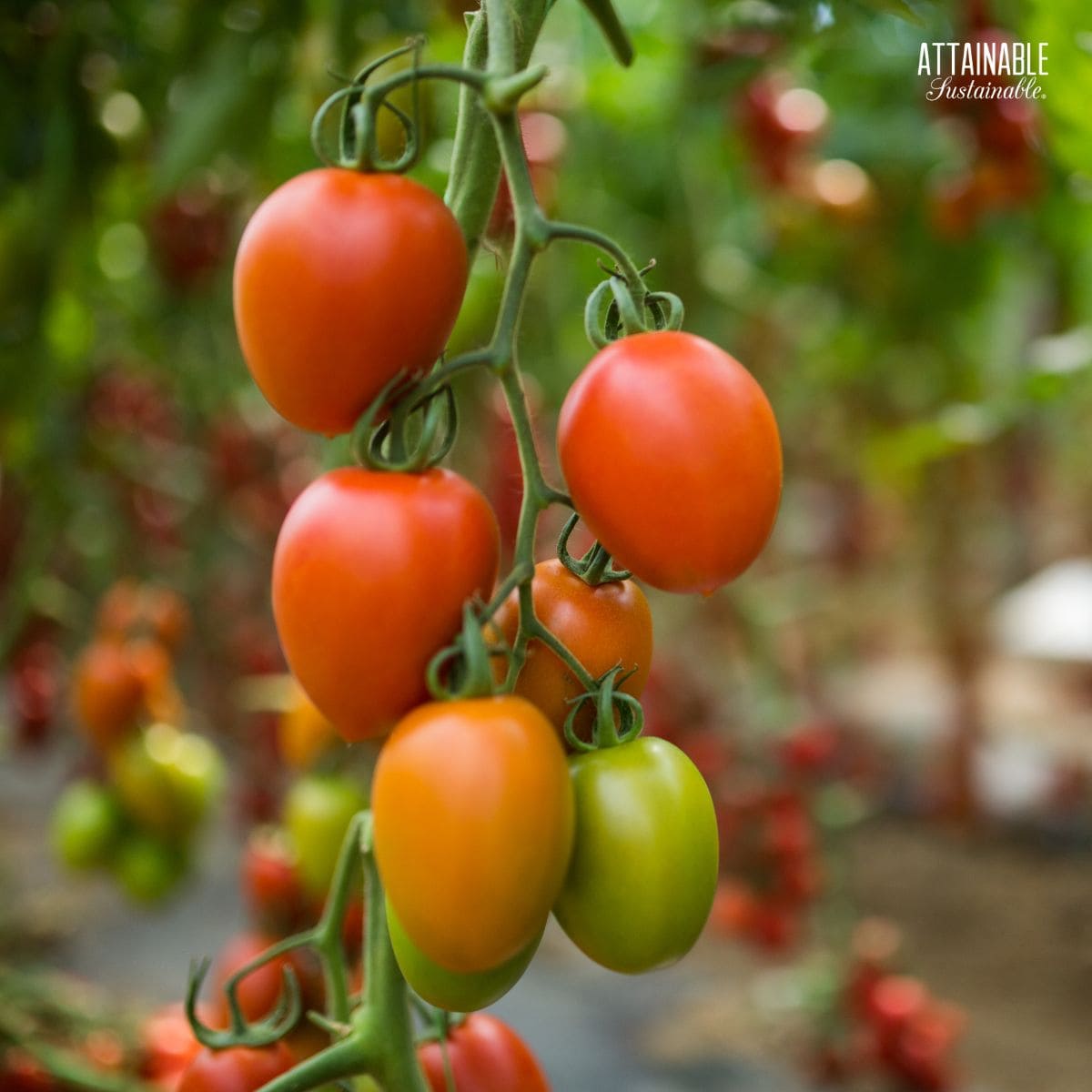
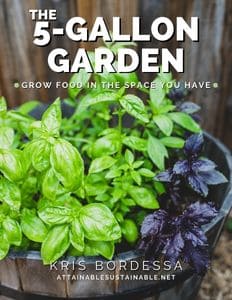
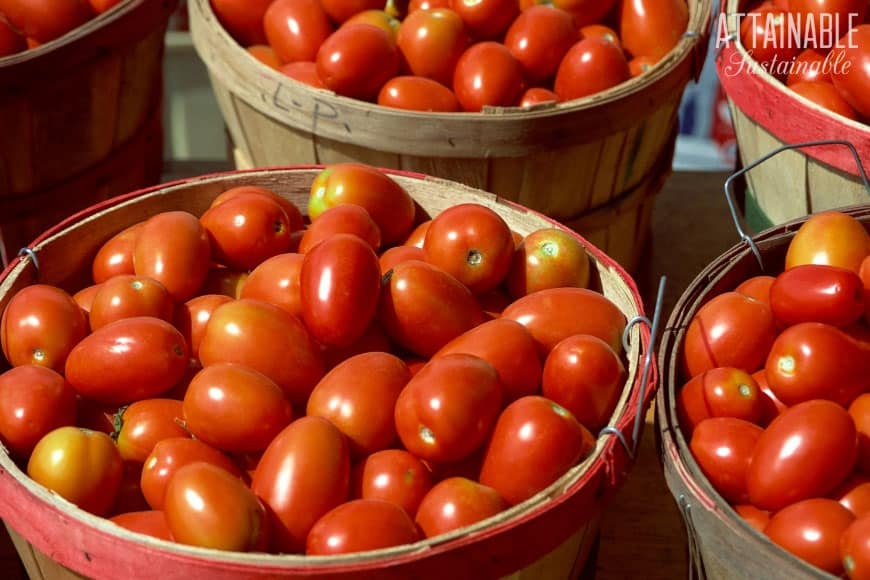
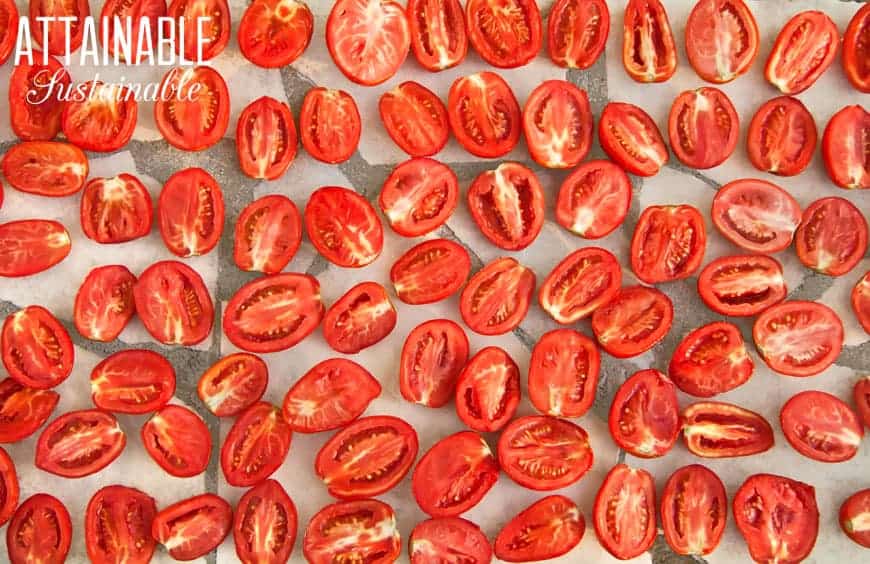

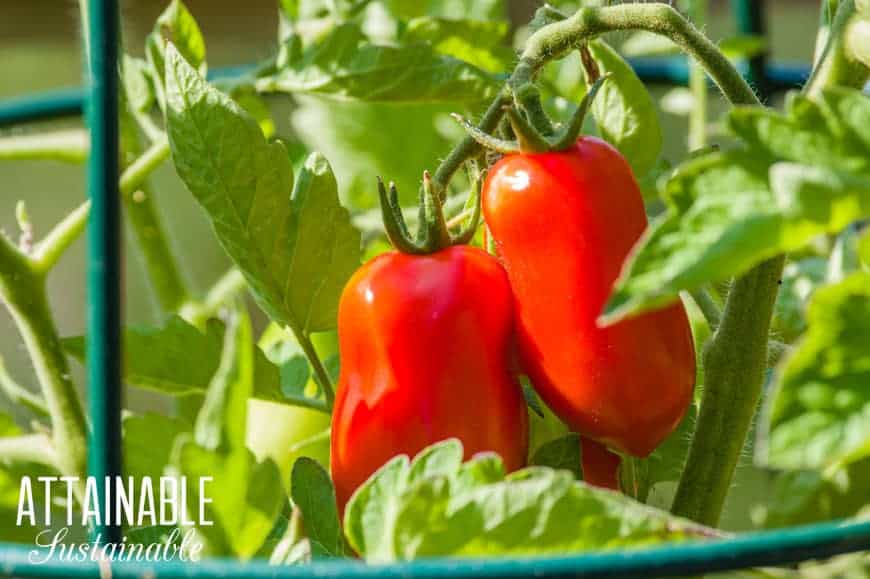
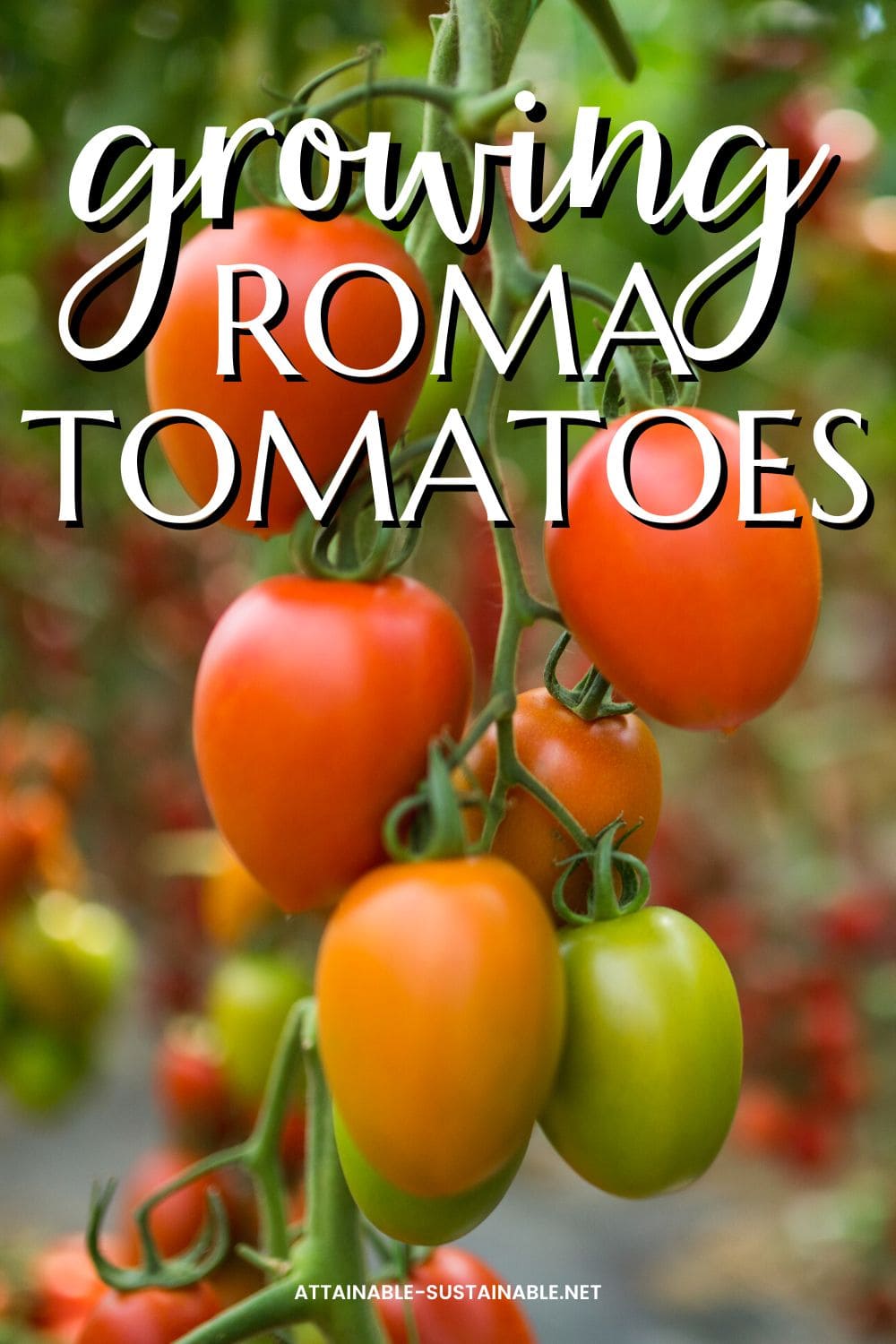
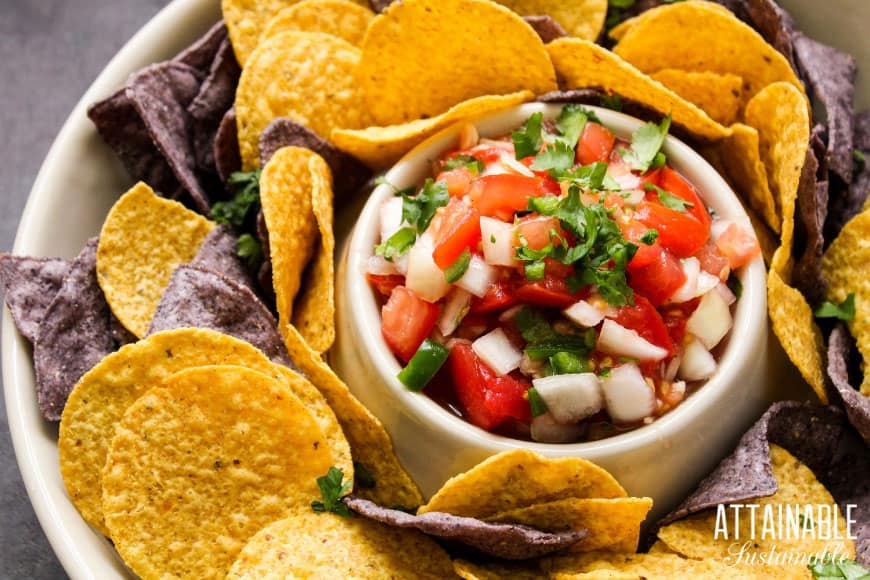
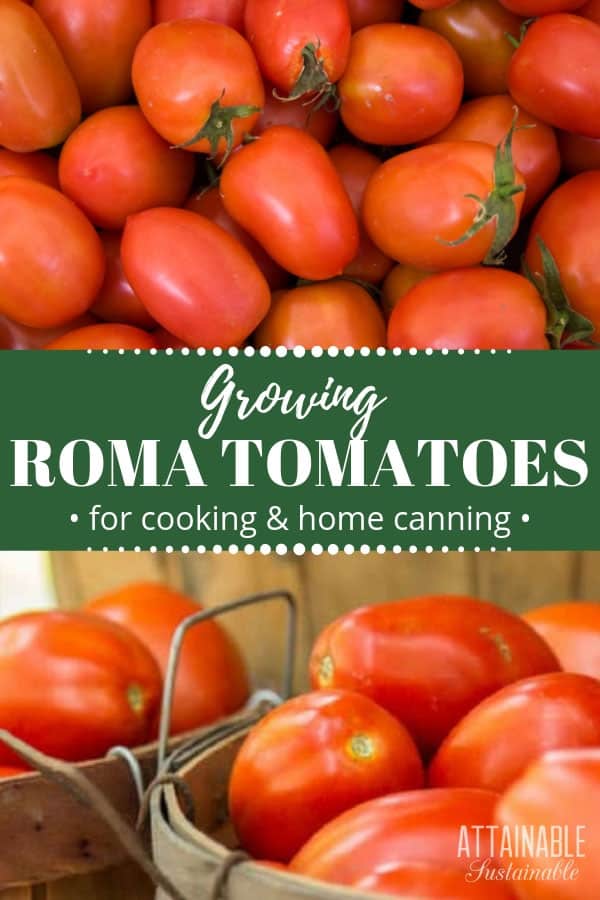

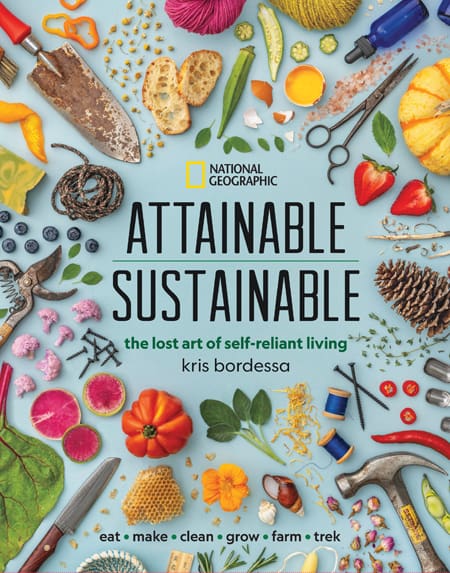
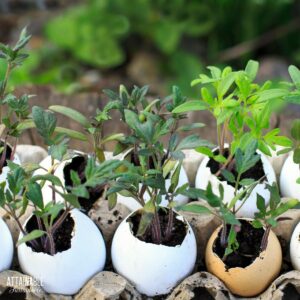
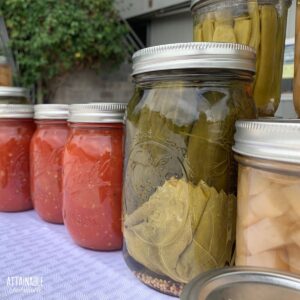

What would cause a very small to turn red when its not as big as even a golf ball?
Sometimes they just ripen while very small, so it could be as simple as that. Sometimes, though, bug damage causes fruit to turn color before it’s ready. Check for damage, but if none is visible, enjoy it!
Kris,
Good afternoon (Texas Hill Country). Starting a wonderful chapter of life w/ my wife & our first baby (boy) on the way. Self-reliance & simplicity is the name of the game for us. Utilized Texas A&M Agrilife Extension to build my own raised beds https://youtu.be/qIA-wuB4lFs with Romas growing beautifully. Thank you for sharing your experience & ideas. Looking forward, as a huge NATGEO fan, to your new book.
v/r
Timothy
Aloha Timothy! Glad to hear your Romas are thriving!
I’ve got Roma and cherry tomatoes… only about 3-4″ tall…. can hardly wait for them to start producing!
Mm. Salsa in your future!
Gotta love a basic Roma! I can’t wait for tomato season! Thanks for the tips, Kris! Hope you have a wonderful week!
Romas are just such a solid addition to a garden. Miss you, friend!